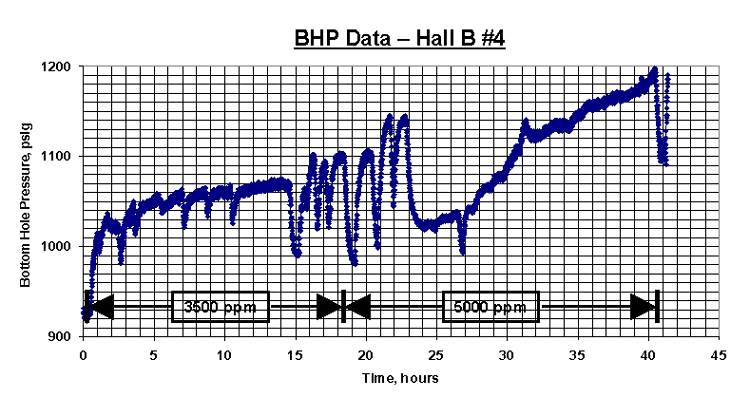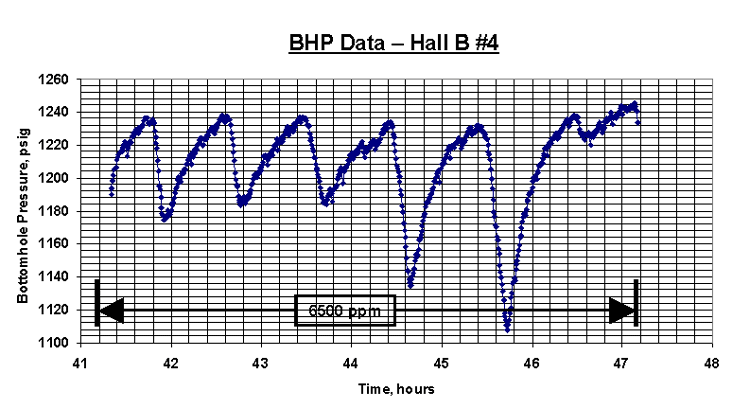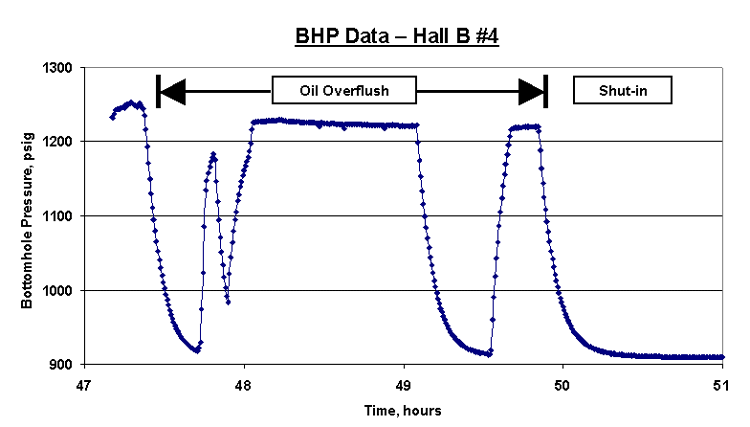
TORP Efforts
In addition to participating in developing the database and website
on these gel polymer treatments, TORP has also conducted pre and post
build-up tests on wells using their computerized echometer, participated
with operators and service companies in collecting bottom-hole pressure
data during treatments and has began efforts to computer model what
occurs during the treatments.
Transient test analysis (build-up tests) measures formation kh (permeability),
skin damage and the flow regime. The flow regime can be linear as flow
through fractures or radial as flow through matrix rock. It is hoped
by analyzing and comparing these tests that insight might be gained
on the size required for pre-treatment acid volumes, candidate well
selection, sizing the polymer treatment and how the reservoir permeability
and fluid flow is affected by the treatments. This data will be used
to help develop the computer model.
Since many of the treatments see little or no pressure at the surface, it was thought it could be useful to collect bottom-hole pressure data during treatments. The pressure response related to pumping this viscous fluid into the reservoir could provide insights into the gel/rock interface, which could help in sizing treatments and setting maximum treating pressures. It could also assist in determining a friction coefficient for pumping gel down tubing and with the computer modeling.
This data is available on the TORP/PTTC gel polymer website on the wells for which it has been collected. Figures 5, 6 and 7 show the bottom-hole pressure data that was collected during the treatment of the Hall B #4 located in the NW/4 of Section 26-T11S-R17W in Ellis County, Kansas and produces from the Bemis-Shutts Field.

Figure 5: Bottom-hole pressure data that was collected during the treatment of the Hall B #4.

Figure 6: Bottom-hole pressure data that was collected during the treatment of the Hall B #4.

Figure 7: Bottom-hole pressure data that was collected during the treatment of the Hall B #4.
URL: http://www.nmcpttc.org/Case_Studies/GelPolymer/torp_efforts.html
Updated February 2003
Updated February 2003